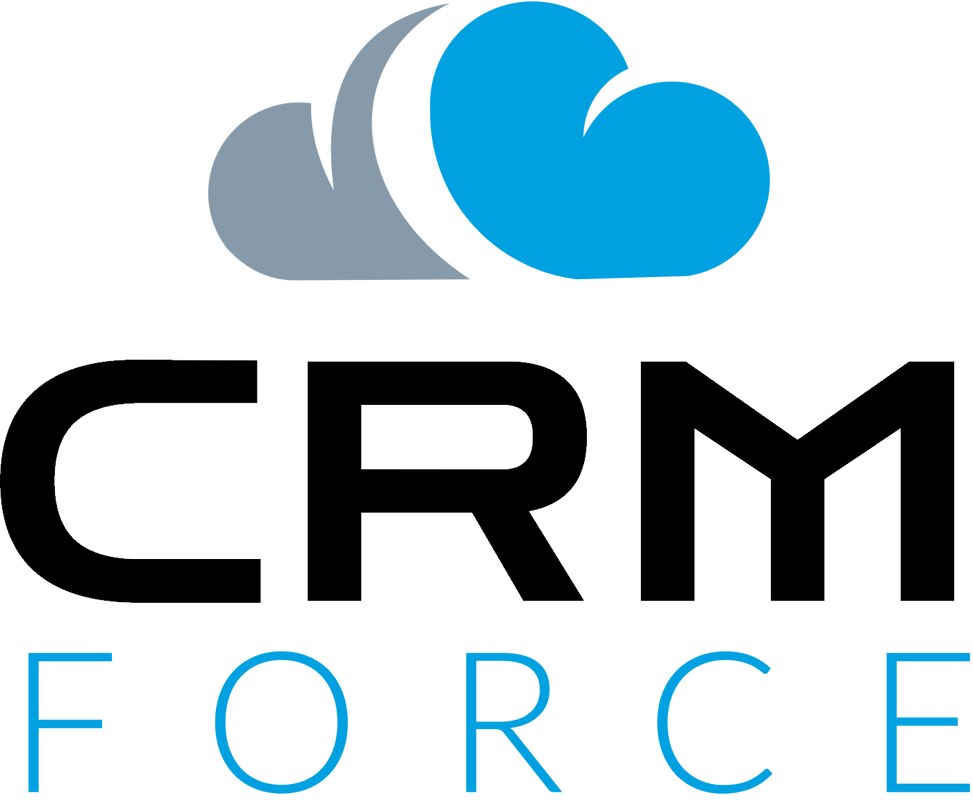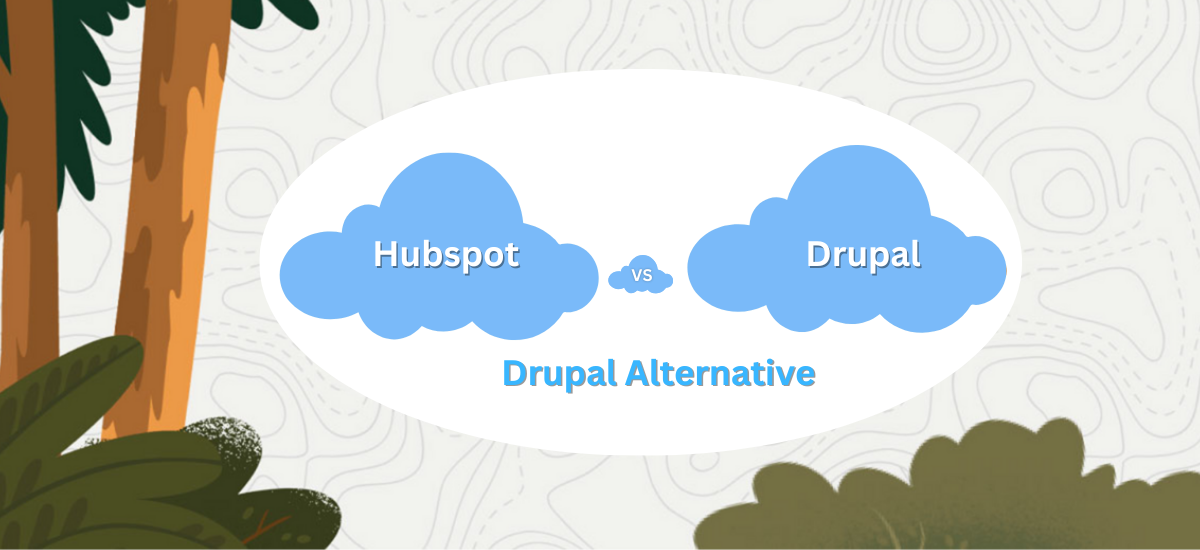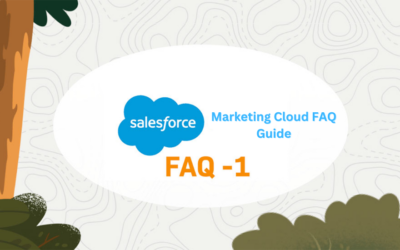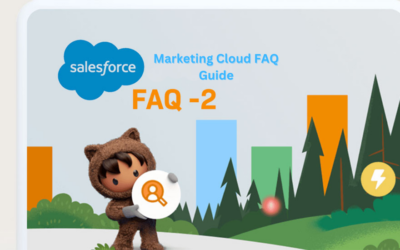In the dynamic landscape of content management systems (CMS), the quest for the ideal platform is akin to navigating an intricate digital maze. Among the prominent contenders vying for attention, HubSpot and Drupal emerge as stalwarts, each wielding distinct strengths that cater to diverse business needs. In this comprehensive exploration, we embark on a journey to unravel the intricacies of HubSpot and Drupal, shedding light on their unique features, advantages, and considerations for businesses seeking a robust CMS solution. As organizations strive to establish a compelling online presence and streamline their digital operations, the choice between these two powerhouses becomes pivotal. Join us as we delve into the user-friendly interface and integrated marketing prowess of HubSpot, contrasting it with the unparalleled flexibility and scalability offered by the open-source juggernaut, Drupal. This exploration aims to empower businesses with the knowledge needed to make an informed decision, ensuring that the chosen CMS aligns seamlessly with their objectives in an ever-evolving digital landscape.
In the digital age, where the battleground for user attention is fought on the virtual frontiers of the internet, the significance of a reliable and efficient content management system cannot be overstated. HubSpot and Drupal, with their distinct philosophies and functionalities, stand at the forefront of this technological battleground. HubSpot, a name synonymous with inbound marketing, has expanded its repertoire to include a robust CMS, offering an integrated solution for businesses aiming to consolidate their marketing efforts. On the other side of the spectrum, Drupal, an open-source giant, beckons businesses with its promise of unparalleled flexibility and scalability. As we embark on this exploration, it becomes clear that the choice between HubSpot and Drupal is not merely a selection of tools; it’s a strategic decision that shapes the digital identity and capabilities of a business. This guide aims to navigate the nuances of this decision-making process, providing businesses with the insights needed to discern the best fit for their unique requirements in the dynamic and competitive digital realm. If you need assistance with Salesforce CRM setup and optimization, companies like CRM Force can provide valuable expertise and support.
1- Understanding HubSpot:
HubSpot has established itself as a leading player in the world of content management systems (CMS), primarily known for its roots in inbound marketing. Over the years, it has evolved into a comprehensive platform, offering not only marketing solutions but also a powerful CMS that caters to the diverse needs of businesses. Let’s delve into the core aspects of HubSpot, shedding light on its user-friendly interface, seamless integration capabilities, and robust features that make it a contender in the CMS arena.
HubSpot’s User-Friendly Interface:
HubSpot is celebrated for its intuitive and user-friendly interface. Designed with marketers in mind, the platform boasts a drag-and-drop functionality that empowers users to create and manage content without the need for extensive coding knowledge. This ease of use is a significant advantage for businesses aiming to streamline their content creation processes, allowing marketing teams to focus on strategy rather than technical intricacies.
The dashboard is clean and navigable, providing a centralized hub for managing various aspects of content creation, marketing campaigns, and analytics. Marketers can easily access tools for creating blog posts, landing pages, and email campaigns, making HubSpot a cohesive solution for businesses looking to consolidate their marketing efforts.
Integration Capabilities:
One of HubSpot’s standout features is its seamless integration with other tools within the HubSpot ecosystem. The CMS is not isolated; instead, it operates synergistically with HubSpot’s CRM (Customer Relationship Management) and marketing automation tools. This integration ensures a unified approach to marketing strategies, allowing businesses to align their content creation with customer interactions and data from other facets of their operations.
The interconnected nature of HubSpot’s suite of tools minimizes data silos, facilitating a more holistic understanding of customer behavior. This integrated approach enables businesses to create personalized and targeted content, enhancing the overall effectiveness of their marketing campaigns.
Marketing Automation Features:
HubSpot’s CMS goes beyond content creation; it integrates robust marketing automation features. Automation is at the heart of modern marketing strategies, and HubSpot empowers businesses to implement automated workflows, lead nurturing campaigns, and personalized content delivery.
Marketers can set up automated responses to user interactions, such as sending follow-up emails, segmenting leads based on behavior, and triggering specific actions based on predefined conditions. This not only saves time but also ensures that the right content reaches the right audience at the optimal time, contributing to improved lead conversion rates and overall marketing efficiency.
2- Unpacking Drupal:
Drupal, a stalwart in the content management system (CMS) landscape, distinguishes itself with its open-source nature, robustness, and unparalleled flexibility. As we delve into the core elements of Drupal, we’ll uncover the platform’s strengths, focusing on its flexibility and customization options, scalability, and the robust community support and security features that contribute to its widespread adoption among enterprises and organizations with diverse and complex digital needs.
Flexibility and Customization:
At the heart of Drupal’s appeal is its unmatched flexibility and customization capabilities. Unlike many other CMS platforms, Drupal empowers developers with the freedom to craft highly customized websites tailored to specific requirements. This level of flexibility is particularly beneficial for businesses with unique design and functionality needs that go beyond the standard templates offered by more rigid CMS solutions.
Drupal’s modular architecture allows developers to create and integrate custom modules, ensuring that the platform can adapt to a wide array of use cases. Whether it’s an intricate e-commerce platform, a community-driven website, or a complex government portal, Drupal’s flexibility makes it a versatile solution for organizations with diverse digital objectives.
Scalability and Performance:
Drupal excels in scalability, making it a preferred choice for large enterprises and organizations with expansive digital footprints. The platform’s architecture is designed to handle substantial amounts of data and traffic, ensuring that it can grow alongside the evolving needs of a business.
As a business expands its digital presence, Drupal remains a reliable companion, capable of supporting increasingly complex websites and applications. This scalability is crucial for enterprises that anticipate significant growth and need a CMS that can adapt without compromising performance.
Community Support and Security:
Drupal benefits from a robust and active community of developers and contributors. This community-driven approach ensures continuous support, regular updates, and the development of new features and modules. The collaborative nature of the Drupal community fosters a rich ecosystem where knowledge is shared, issues are addressed promptly, and the platform evolves to meet the challenges of the digital landscape.
Security is a paramount concern for any online platform, and Drupal’s community places a strong emphasis on it. The platform is known for its proactive approach to security, with a dedicated security team that addresses vulnerabilities promptly. Regular security updates and a vigilant community contribute to Drupal’s reputation as a secure choice for organizations handling sensitive data.
3- The HubSpot vs. Drupal Showdown:
Now that we have a deeper understanding of both HubSpot and Drupal, let’s embark on a head-to-head comparison to highlight the nuances that can guide your decision-making process. Each platform brings its own strengths to the table, catering to different needs and priorities. In this showdown, we’ll explore key factors such as ease of use, customization and complexity, cost considerations, and scalability to help you make an informed decision based on your unique business requirements.
Ease of Use:
HubSpot takes the lead in terms of ease of use, making it an accessible choice for marketers and content creators with varying technical expertise. Its user-friendly interface, equipped with drag-and-drop functionality, simplifies content creation and management. This ease of use is particularly advantageous for businesses that prioritize a straightforward approach to content management without the need for extensive training.
On the other hand, Drupal, while powerful and flexible, tends to have a steeper learning curve. It is more developer-centric, requiring skilled professionals to navigate its complexities effectively. For businesses with a strong technical team, Drupal’s learning curve may not be a significant hurdle, but it could pose challenges for organizations without dedicated development resources.
Customization and Complexity:
HubSpot is designed to be intuitive and user-friendly, but this simplicity comes with a trade-off in terms of customization. While it offers a range of templates and tools for customization, the extent of freedom is not as expansive as Drupal. Businesses with intricate design and functionality needs may find HubSpot’s customization options limiting.
Drupal, on the other hand, excels in customization. Its open-source nature allows developers to dive deep into the platform, creating highly tailored solutions. This flexibility, however, comes at the cost of complexity. Businesses that prioritize extensive customization and have the technical expertise to navigate Drupal’s intricacies will find it to be a powerful tool for creating unique digital experiences.
Cost Considerations:
Cost is a crucial factor in any business decision. HubSpot often comes with a higher price tag, especially for businesses looking to leverage its full suite of marketing and CRM tools. The subscription model and tiered pricing can be a barrier for smaller businesses with budget constraints.
Drupal, being open-source, can be a more cost-effective solution in terms of licensing fees. However, it’s important to note that costs may accrue for development, maintenance, and potential third-party integrations. The total cost of ownership for Drupal should be evaluated based on the specific requirements and resources available within your organization.
Scalability:
HubSpot is well-suited for small to medium-sized businesses looking for an integrated solution to manage their marketing efforts. Its scalability is effective within this range, offering a seamless experience for growing businesses. However, for large enterprises with expansive digital ecosystems, the scalability of HubSpot may present limitations.
Drupal, on the other hand, shines in scalability. Its architecture is built to handle large amounts of data and traffic, making it an ideal choice for enterprises with plans for significant growth. The flexibility to scale Drupal alongside the evolving needs of a business positions it as a robust solution for organizations with complex and expansive digital footprints.
4- Making the Decision:
The decision-making process between HubSpot and Drupal ultimately hinges on a careful consideration of your business goals, priorities, and specific requirements. Both platforms bring unique strengths to the table, and the right choice depends on how well these align with your organization’s digital strategy. In this section, we’ll guide you through key considerations that can help you make an informed decision tailored to the needs of your business.
Business Goals and Priorities:
Begin by clearly defining your business goals and priorities. If your primary focus is on streamlining marketing efforts, creating content efficiently, and integrating marketing tools seamlessly, HubSpot may be the more suitable choice. Its user-friendly interface and integrated marketing automation features cater to businesses looking for an all-in-one marketing solution.
Conversely, if your business demands a high level of customization, scalability for expansive digital footprints, and the flexibility to create unique digital experiences, Drupal may align better with your goals. Consider whether your immediate priorities lean towards marketing-centric solutions or if you require a robust, highly customizable platform for diverse digital projects.
Ease of Use vs. Customization Needs:
Evaluate the technical expertise within your organization. HubSpot’s strength lies in its ease of use, making it accessible for marketers and content creators without extensive technical knowledge. If your team values a user-friendly interface and needs a platform that can be managed with minimal training, HubSpot might be the more pragmatic choice.
On the other hand, if your organization has a skilled development team and places a premium on extensive customization, Drupal offers unparalleled flexibility. While it comes with a steeper learning curve, the payoff is the ability to create highly tailored digital solutions that align precisely with your vision and requirements.
Cost Considerations:
Understand your budget constraints and evaluate the total cost of ownership for each platform. HubSpot, with its subscription-based model, may have a higher upfront cost, especially for businesses aiming to leverage its full suite of marketing and CRM tools. Consider whether the features provided justify the investment and align with your business’s financial capacity.
Drupal, being open-source, can be more cost-effective in terms of licensing fees. However, factor in the costs associated with development, maintenance, and potential third-party integrations. Assess the long-term financial implications and ensure that the chosen platform aligns with your budgetary constraints without compromising on essential features.
Scalability for Future Growth:
Consider the growth trajectory of your business. HubSpot is well-suited for small to medium-sized enterprises looking for a streamlined solution to manage marketing efforts. If your business operates within this range and scalability is not a primary concern, HubSpot may provide a more straightforward and integrated experience.
Conversely, if your organization anticipates significant growth with an expanding digital footprint, Drupal’s scalability becomes a key advantage. Its architecture is designed to handle large amounts of data and traffic, making it a robust choice for enterprises planning for long-term expansion.
5- Technical Comparisons for HubSpot vs. Drupal:
Content Structure and Management:
HubSpot, as a platform designed with marketers in mind, offers a structured approach to content management. It employs a topic cluster model, allowing for the creation of pillar content supported by related cluster content. This helps in optimizing content for search engines and improving overall SEO. On the other hand, Drupal takes a more flexible approach, offering a content-type system that allows developers to define and customize different content structures. This makes Drupal a robust choice for businesses with diverse and complex content needs, enabling the creation of intricate content hierarchies tailored to specific requirements.
SEO Capabilities:
Both HubSpot and Drupal recognize the importance of SEO, but they approach it in different ways. HubSpot, being an inbound marketing platform, incorporates SEO tools seamlessly into its content creation process. It provides recommendations for optimizing content, tracking keyword performance, and improving overall search engine visibility. Drupal, while not inherently SEO-focused, allows for extensive customization. Developers can implement SEO best practices directly into the website’s code, giving businesses more control over the technical aspects of search engine optimization.
E-commerce Functionality:
HubSpot offers native e-commerce functionality, allowing businesses to set up and manage online stores directly within the platform. This is particularly advantageous for smaller businesses looking for an integrated solution. Drupal, on the other hand, integrates with various e-commerce modules, providing a more modular and customizable approach. For businesses with intricate e-commerce requirements or those already invested in a specific e-commerce solution, Drupal’s flexibility allows for seamless integration and customization.
Performance and Speed:
Performance is a critical aspect of user experience and SEO. HubSpot, being a hosted solution, takes care of the infrastructure and ensures a certain level of performance. It comes with Content Delivery Network (CDN) capabilities to enhance page loading speed. Drupal’s performance depends on the hosting environment and the efficiency of the implemented code. With proper optimization and a robust hosting setup, Drupal can deliver excellent performance, making it a choice for enterprises with the resources to fine-tune their hosting infrastructure.
Community and Support:
HubSpot provides dedicated customer support and resources, leveraging its extensive knowledge base and customer community. However, as a proprietary platform, the level of community involvement is more limited compared to open-source solutions. Drupal, being open-source, boasts a vast and active community of developers and contributors. This community support translates to a wealth of resources, regular updates, and a collaborative environment where issues are addressed promptly. The choice between HubSpot and Drupal also involves considering the kind of support structure that aligns with the business’s preferences and requirements.
Conclusion
In the intricate dance between HubSpot and Drupal, businesses find themselves at a crossroads, each path promising a unique set of advantages. The decision-making journey involves careful consideration of factors like ease of use, customization needs, costs, and scalability. HubSpot’s user-friendly interface and integrated marketing tools appeal to those seeking a streamlined approach to content management, especially in the realm of inbound marketing. On the flip side, Drupal’s open-source nature and exceptional flexibility make it an enticing choice for businesses with intricate digital demands and a penchant for customization. As organizations chart their course through this CMS landscape, it’s crucial to align the chosen platform with their specific goals and priorities. However, it’s equally important to acknowledge that the CMS arena extends beyond this HubSpot vs. Drupal dichotomy. In the quest for the ideal content management solution, businesses should also explore Drupal alternatives that strike a balance between user-friendliness, customization, and scalability. The digital horizon holds a myriad of possibilities, and finding the optimal CMS involves not only weighing the merits of HubSpot and Drupal but also considering alternatives that might offer a more tailored fit for the evolving needs of businesses in the digital age.
In this dynamic digital era, where innovation and adaptability are the keys to staying ahead, the conclusion of the HubSpot vs. Drupal exploration invites businesses to ponder the concept of a “Drupal Alternative.” While both HubSpot and Drupal present compelling choices, acknowledging the diverse landscape of CMS solutions is imperative. The term “Drupal Alternative” encapsulates the idea that the perfect CMS might lie beyond the immediate choices at hand. It prompts businesses to delve into lesser-explored options that could provide the ideal balance between user-friendly interfaces, extensive customization, and scalability. As the digital ecosystem continues to evolve, the exploration of alternatives ensures that businesses are equipped with the agility to adapt to changing trends and technological landscapes. In the quest for the optimal CMS, the notion of alternatives becomes a beacon, guiding businesses to a solution that not only meets their current needs but also paves the way for future growth and innovation. To learn more about how CRM Force can assist you in recruiting top CRM talent and optimizing your CRM strategies for successful drip campaigns, contact us today. Together, let’s maximize your customer engagement Contact Us today.





